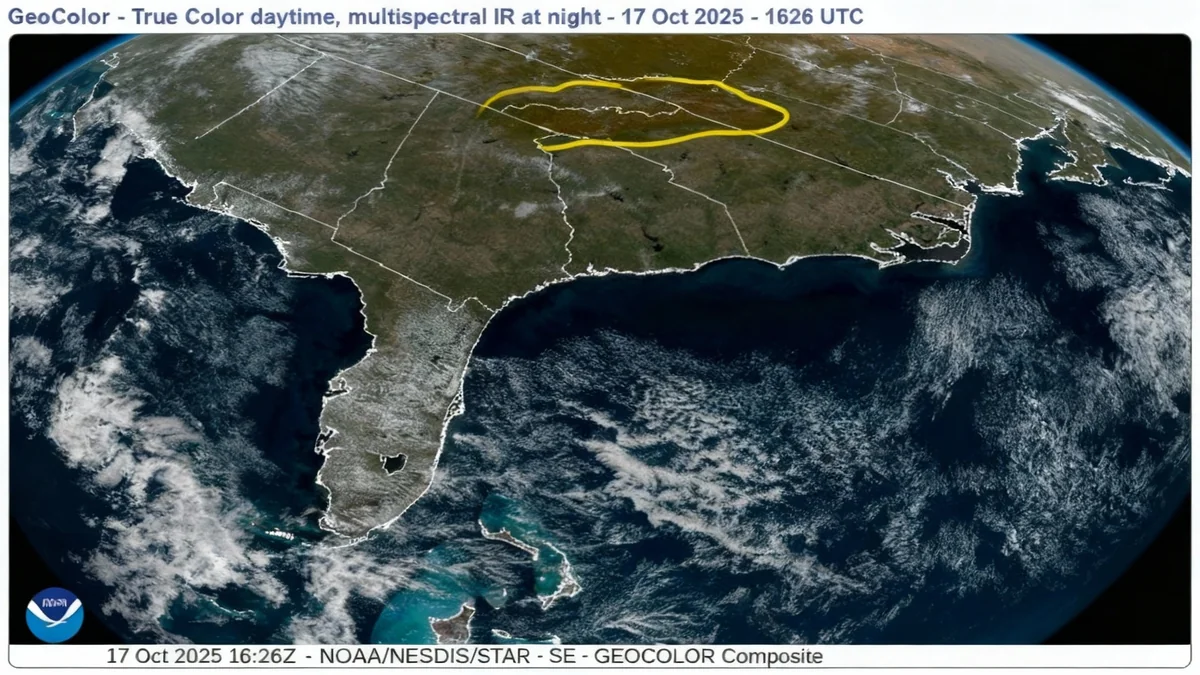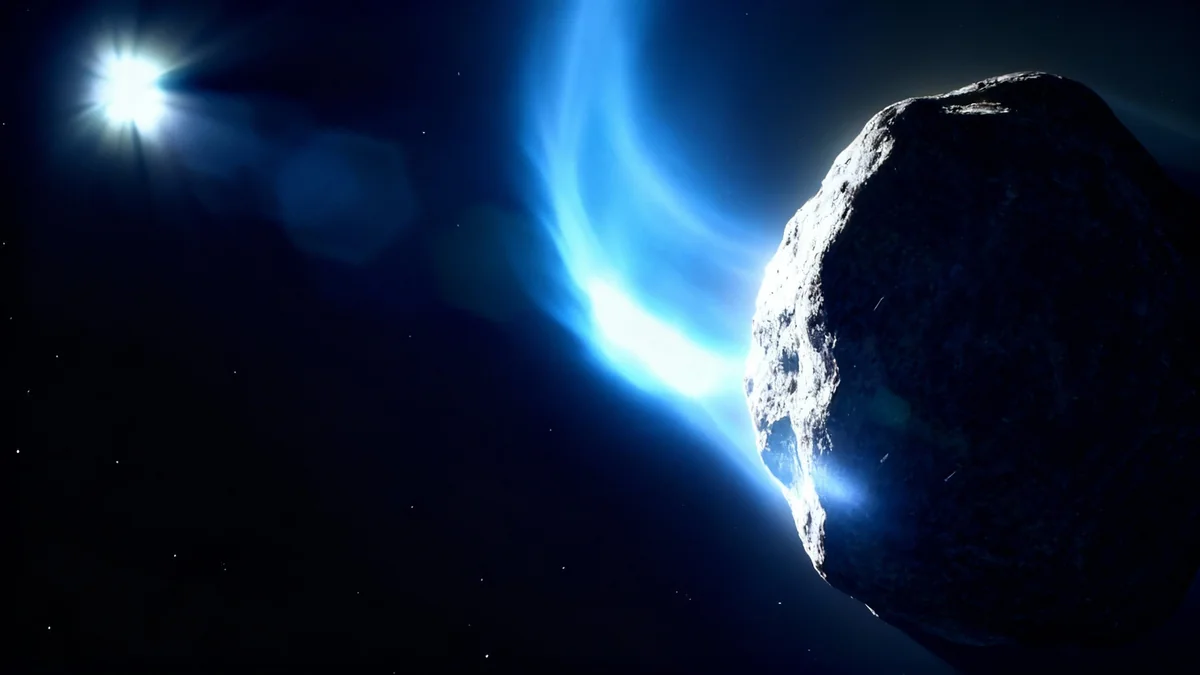Modern weather satellites are providing a unique perspective on one of nature's most colorful displays: the annual change of autumn leaves. Recent images from space show the progression of fall foliage across regions like the Appalachian Mountains, offering scientists and the public a large-scale view of this seasonal transformation.
This capability not only showcases the beauty of the season but also provides valuable data on forest health and the impact of climate conditions, such as drought, on these natural cycles. The technology relies on sophisticated sensors that can detect the same colors our eyes see, but from hundreds of miles above Earth.
Key Takeaways
- Satellites like those from NOAA and NASA can capture true-color images of fall foliage changes across entire regions.
- Leaf color change is caused by the breakdown of green chlorophyll, which reveals underlying yellow and orange pigments (carotenoids and xanthophylls).
- Red and purple hues are created by anthocyanin pigments, which are produced in the fall in response to specific weather conditions.
- Weather plays a critical role; warm, sunny days and cool, crisp nights produce the most vibrant colors, while drought can cause leaves to fall prematurely.
- Satellite instruments use the visible light portion of the electromagnetic spectrum to see colors, similar to the human eye.
The Science Behind Autumn's Colors
The transition from the deep greens of summer to the brilliant yellows, oranges, and reds of autumn is a complex biological process. It is driven primarily by changes in daylight and temperature, which signal deciduous trees to prepare for winter.
The Dominance of Green in Summer
Throughout the spring and summer, tree leaves are packed with a pigment called chlorophyll. This is the key component for photosynthesis, the process where plants use sunlight to convert carbon dioxide and water into energy.
Chlorophyll is so abundant that it masks all other pigments present in the leaves, giving them their characteristic green color. It is constantly being produced and broken down during the growing season.
Unmasking the Yellows and Oranges
As autumn approaches, the days grow shorter and temperatures drop. These environmental cues cause trees to slow down and eventually stop their food-making process. The production of chlorophyll halts, and the existing green pigment begins to break down.
With the green chlorophyll gone, other pigments that were present in the leaf all along are finally revealed. These include:
- Carotenoids: Responsible for orange colors, like those seen in carrots.
- Xanthophylls: Produce the bright yellow hues.
These pigments are always in the leaves but are simply overpowered by the sheer amount of green chlorophyll during the summer.
How Weather Shapes the Autumn Display
While the timing of color change is largely determined by the length of days, the intensity and vibrancy of the colors are heavily influenced by weather conditions. Not every autumn produces the same spectacular display.
The Impact of Drought
According to the National Weather Service, recent drought conditions in areas like north and central Georgia have had a noticeable effect. The lack of water stresses the trees, causing their leaves to dry out and fall off before their colors can fully develop. This can lead to a shorter and less vibrant foliage season.
The Perfect Recipe for Bright Colors
The most brilliant autumn foliage occurs with a specific combination of weather factors. The ideal conditions include a series of warm, sunny days paired with cool, but not freezing, nights.
Bright sunlight during the day allows the trees to produce high amounts of sugars in their leaves. The cool nights then prevent these sugars from moving out of the leaves through the veins. This high concentration of sugar in the leaves stimulates the production of anthocyanins, the pigments responsible for vivid red and purple colors.
Cloudy days and warm nights can lead to less intense colors because sugar production is lower and the sugars can more easily move out of the leaves.
Viewing Foliage From a New Vantage Point
Advancements in satellite technology allow us to monitor these seasonal changes on a massive scale. Instruments orbiting Earth capture detailed images that reveal the subtle shifts in color across entire mountain ranges and forests.
What is a Deciduous Tree?
The term "deciduous" refers to trees and shrubs that shed their leaves annually, usually in the autumn. This is a survival strategy to conserve water and energy during the winter months. The Appalachian Mountains are home to a wide diversity of deciduous species, contributing to the rich tapestry of fall colors.
How Satellites 'See' Color
The images shared by agencies like the National Oceanic and Atmospheric Administration (NOAA) are often "true-color" images. These are created using data from the visible light portion of the electromagnetic spectrum—the same range of light that the human eye uses to see.
According to NOAA, its GeoColor product is a multispectral composite that combines different data channels to create a view that is similar to what a person would see from space. During the day, it simulates true colors, including a green component, to show Earth's surface realistically.
Essentially, the satellite's sensor acts like a powerful digital camera, capturing the light reflected from the Earth's surface. When leaves change from green to red and orange, the satellite detects this shift in the reflected light wavelengths.
Beyond Visible Light
Satellites can do much more than just take pretty pictures. Scientists use different parts of the electromagnetic spectrum to gather a wide range of information about our planet. For example, instruments that detect infrared radiation can measure heat.
This technology is used to identify urban heat islands, where cities are significantly warmer than surrounding rural areas. NASA also uses derived products like the Enhanced Vegetation Index (EVI) to monitor plant health, density, and changes over time, which is crucial for studying ecosystems and climate change.
By combining visible imagery with other data, scientists gain a comprehensive understanding of how our planet's systems work and change through the seasons.





